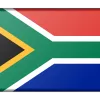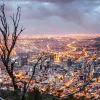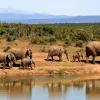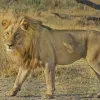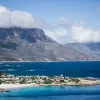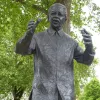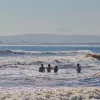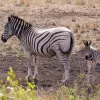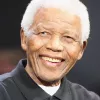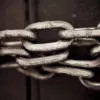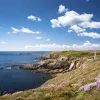Important update from TheSchoolRun
For the past 13 years, TheSchoolRun has been run by a small team of mums working from home, dedicated to providing quality educational resources to primary school parents. Unfortunately, rising supplier costs and falling revenue have made it impossible for us to continue operating, and we’ve had to make the difficult decision to close. The good news: We’ve arranged for another educational provider to take over many of our resources. These will be hosted on a new portal, where the content will be updated and expanded to support your child’s learning.
What this means for subscribers:
- Your subscription is still active, and for now, you can keep using the website as normal — just log in with your usual details to access all our articles and resources*.
- In a few months, all resources will move to the new portal. You’ll continue to have access there until your subscription ends. We’ll send you full details nearer the time.
- As a thank you for your support, we’ll also be sending you 16 primary school eBooks (worth £108.84) to download and keep.
A few changes to be aware of:
- The Learning Journey weekly email has ended, but your child’s plan will still be updated on your dashboard each Monday. Just log in to see the recommended worksheets.
- The 11+ weekly emails have now ended. We sent you all the remaining emails in the series at the end of March — please check your inbox (and spam folder) if you haven’t seen them. You can also follow the full programme here: 11+ Learning Journey.
If you have any questions, please contact us at [email protected]. Thank you for being part of our journey it’s been a privilege to support your family’s learning.
*If you need to reset your password, it will still work as usual. Please check your spam folder if the reset email doesn’t appear in your inbox.
South Africa
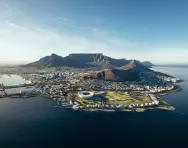
South Africa is the southern most country of the continent of Africa.
The "Rainbow Nation" is home to world-famous wildlife reserves, national parks and a huge coastline (the Indian Ocean runs alongside the east coast of South Africa and the Atlantic Ocean to the west).
It is also famous for overcoming its history of apartheid and for the work and achievements of its most famous statesman, Nelson Mandela.
Top 10 facts
1. South Africa is known as the "Rainbow Nation" because its people belong to so many different races. Settlers from Holland, Britain, India and Malaysia went to live in South Africa in the past, and one of the largest groups of native people were the Ndebele. All the descendants of these different peoples are now South African.
2. South Africa has three capital cities: the President lives in Pretoria, parliament meets in Cape Town and the law courts are in Bloemfontein.
3. There are 11 official languages in South Africa, and most South Africans can speak more than one language. The official languages of South Africa are: English, Afrikaans, Zulu, Xhosa, Southern Sotho, Tswana, Northern Sotho, Venda, Tsonga, Swati and Ndebele.
4. The coastline of South Africa stretches more than 2500 km (1553 miles).
5. The official currency of South Africa is the rand.
6. During much of the 20th century, apartheid, a political system of institutionalised racial segregation and discrimination dominated life in South Africa; non-white South Africans were forced to live in separate areas and use separate public facilities and they were not allowed to vote. Today all South Africans have equal rights.
7. The South African territory includes two independent countries, Lesotho and Swaziland.
8. The Kruger National Park is the largest game reserve on the continent and one of the main tourist attractions in South Africa.
9. Nelson Mandela (President of South Africa from 1994 to 1999) was the first in his family to attend school. He was an equal rights activist who was imprisoned for 26 years but went on to become one of the world's most respected politicians.
10. Christianity is the religion of 86.8% of South Africans.
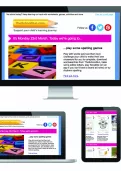
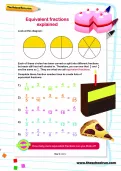
Start your child on a learning programme today!
- Weekly English, maths & science worksheets direct to your inbox
- Follows the National Curriculum
- Keeps your child's learning on track
Did you know?
South Africa is the only nation-state named after its geographic location.
A new South African flag was adopted in 1996. It is unusually colourful, with six colours: red-white-blue represent South African people of English and Afrikaans origin, green for Muslims and black-green-yellow for African National Congress supporters or red-white-black-green-yellow for Zulus.
South Africa was the first African country to host the FIFA Soccer World Cup in 2010.
Table Mountain in Cape Town is one of the oldest mountains in the world. It is flat and looks like a table!
South Africa is famous for its diamond and gold mines.
South Africa is home to amazing animal life, including the world's biggest land mammals (elephants, rhinoceroses and hippopotamuses), the tallest mammals (giraffes), the fastest (cheetahs) and the smallest (the pygmy shrew).
Football, rugby and cricket are the country's most popular sports. Traditional African games like dibeke (a ball game) are also played.
The world's first human heart transplant took place in Cape Town in 1967, performed by surgeon Dr Christian Barnaard.
Browse through the gallery and see if you can spot the following:
- The South African flag
- Cape Town
- African elephants
- Lions in South Africa
- Table Mountain
- A statue of Nelson Mandela
- The South African coast
- A zebra on safari
Gallery
About
The Republic of South Africa is located at the "bottom" of the African continent, on its southern-most tip. South Africa is the richest country in Africa
Desert, grassland, mountains and coastal regions are present in South Africa. The longest river is the Orange River which also forms part of the border between Namibia and South Africa. The Tugela Falls are the second-highest waterfalls in the world after Niagra Falls in Canada.
Although South Africa is known for its warm climate and safari experiences, in the Drakensberg mountain region there is snow in the winter. You can even ski there!
Around 77 per cent of the population of South Africa are black Africans from different ethnic groups (the Zulu and the Xhosa are the largest sub-groups). Around 11 per cent of South Africans are white and speak either Afrikaans (a language similar to Dutch spoken by descendants of Dutch, French and German settlers) or English. After whites, people of mixed race are South Africa’s next-largest minority group and known as Coloureds.
The native people of South Africa were the San and the Khoekhoe people, hunter-gatherers who lived in the south of Africa 10,000 years ago. European settlers arrived in the 1400s and Dutch settlers built a shipping station at Cape Hope in 1652. Britain first occupied the Cape of Good Hope in 1795.
South Africa is one of the world's largest mineral producers. It exports gold, diamonds, platinum and chromium. It is also the world's third-largest producer of coal.
South Africa is also the most popular tourist destination in Africa.
For much of the 20th century South Africa’s white minority-dominated government separated the population by race in a system known as apartheid. People of different races were forced to live in different places and black people were not allowed to vote or have equal rights to the white population. The apartheid regime caused South Africa to be isolated from the rest of the world. In 1994 the election of an all-race government ended apartheid. Nelson Mandela (1918-2013), South Africa's first black President, worked with South African politician Frederik Willem De Klerk to end apartheid; the two men were awarded the Nobel Peace Prize in 1993.
Related Videos
Just for fun...
South Africa colouring pages, worksheets and printables
Print out and colour the flag of South Africa
Make your own rock art like the San hunter-gatherer people
Comics from the Apartheid Museum explain the history of apartheid through the eyes of a young boy; read them for free online
Make your own African mask and find out more about how traditional masks are worn
Learn to say a few phrases in Afrikaans and Zulu (click the Kids tab and then South Africa on the interactive map)
Make your own 3D shoebox safari
Spot South Africa on a map of African countries
Learn to make traditional South African malva pudding
Listen to rhymes and songs in Afrikaans
Children's books about South Africa
Find out more
Top South Africa facts and figures
Read about Nelson Mandela, the "father" of the South African nation
A kids' guide to apartheid and Nelson Mandela
A child's experience of apartheid
Top 10 South African foods, including biltong dry-cured meat, boerewors sausage, chakalaka (a vegetable dish of onions, tomatoes, peppers, carrots, beans and spices), pap (porridge) and braai (BBQ)
A BBC timeline of historical events in South Africa
Find out more about the Xhosa, Zulu and San people of South Africa
Resources about Nelson Mandela and his life
Watch a video about South African townships
See a troupe of young South African dancers perform the Zulu indlamu
Fact files and information about the animals who live in Africa
See for yourself
See pictures and find out more about South Africa's natural attractions, including the Cape Coast, Table Mountain and the Blyde Rover Canyon Nature Reserve
Kruger National Park is visited by 1.4 million safari visitors a year and is home to thousands of animals
Cape Town is a popular South African visitor destination
Take a virtual online tour of Robben Island Prison Museum, where anti-apartheid activists were incarcerated
